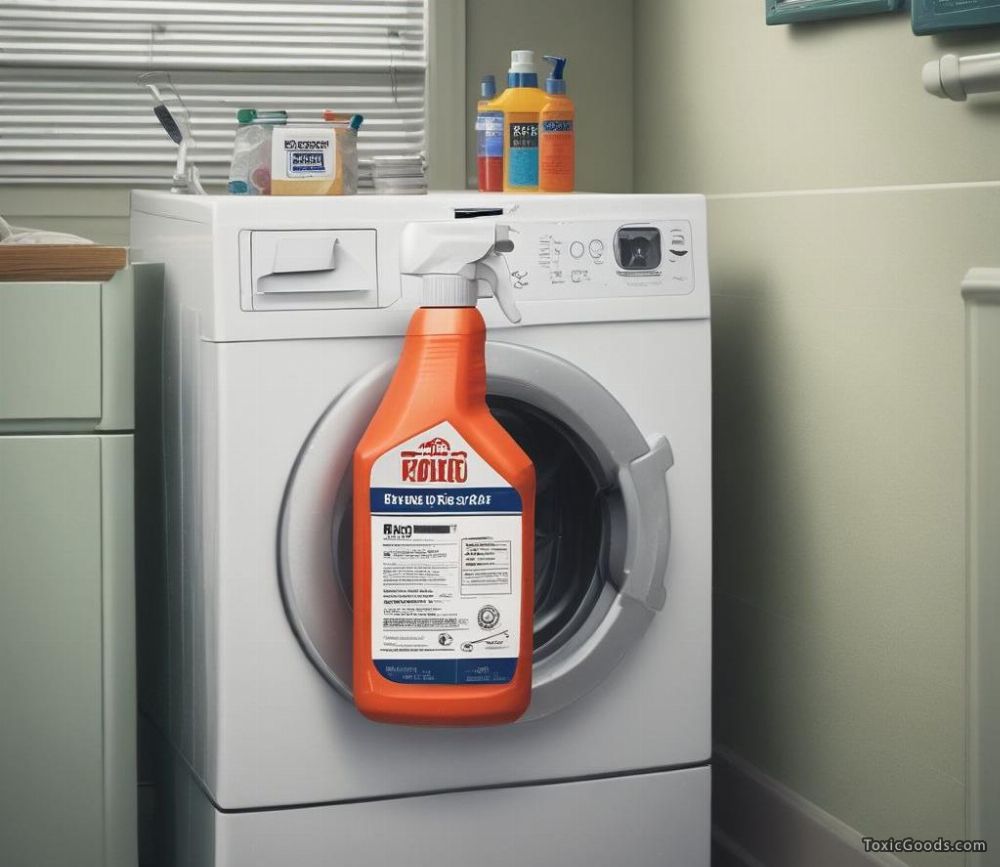Stain Removers Toxicity: The Hidden Dangers in Your Cleaning Routine
We’ve all been there – that moment when you discover a fresh coffee stain on your favorite shirt or a grease spot on the carpet. Reach for the stain remover, spray it on, and like magic, the stain disappears. But what exactly are we spraying onto our clothes and household surfaces? The truth about commercial stain removers might make you think twice before using them again.
Most stain removers contain a cocktail of harsh chemicals designed to break down stubborn stains. While they’re effective at removing spots, they can also introduce harmful substances into your home environment. From respiratory irritants to potential carcinogens, these products often contain ingredients that pose significant health risks, especially with regular use.
The Toxic Ingredients Lurking in Your Stain Remover
 Take a closer look at the label of any commercial stain remover and you’ll likely find chemicals like perchloroethylene (a common dry-cleaning agent), butyl cellosolve (a solvent that can damage red blood cells), or ammonia derivatives. These substances are particularly concerning because they don’t just stay on your clothes – they can become airborne during use or linger in fabrics that come into direct contact with your skin.
Take a closer look at the label of any commercial stain remover and you’ll likely find chemicals like perchloroethylene (a common dry-cleaning agent), butyl cellosolve (a solvent that can damage red blood cells), or ammonia derivatives. These substances are particularly concerning because they don’t just stay on your clothes – they can become airborne during use or linger in fabrics that come into direct contact with your skin.
Children and pets are especially vulnerable to these chemicals. Think about how often kids put their clothes in their mouths or how pets lie on freshly cleaned carpets. The chemicals in stain removers can be absorbed through the skin or inhaled, potentially causing everything from mild irritation to more serious long-term health effects.
What These Chemicals Do to Your Body
When you use stain removers, you’re potentially exposing yourself to chemicals that can affect multiple body systems. Respiratory problems are among the most immediate concerns – many people report coughing, wheezing, or asthma attacks after using strong stain treatments. Skin contact can lead to irritation, rashes, or even chemical burns with some of the more potent formulas.
Perhaps more worrying are the potential long-term effects. Some stain remover ingredients have been linked to neurological problems, liver damage, and even certain cancers. While more research is needed, the precautionary principle suggests we should limit our exposure to these potentially harmful substances whenever possible.
Environmental Impact Beyond Your Home
 The problems with stain removers don’t stop at your front door. When these chemicals go down the drain, they can wreak havoc on aquatic ecosystems. Many wastewater treatment plants aren’t equipped to remove all these synthetic compounds, meaning they can end up in rivers, lakes, and eventually our drinking water.
The problems with stain removers don’t stop at your front door. When these chemicals go down the drain, they can wreak havoc on aquatic ecosystems. Many wastewater treatment plants aren’t equipped to remove all these synthetic compounds, meaning they can end up in rivers, lakes, and eventually our drinking water.
Aquatic organisms are particularly sensitive to these pollutants. Some stain remover ingredients can disrupt hormone systems in fish, while others are outright toxic to marine life. Even “biodegradable” claims on labels don’t always tell the whole story – some products break down into compounds that are still harmful to the environment.
Safer Alternatives That Actually Work
The good news? You don’t have to choose between clean clothes and your family’s health. Simple household ingredients like baking soda, white vinegar, and lemon juice can tackle many common stains effectively. For tougher jobs, enzyme-based cleaners offer a less toxic alternative that’s still powerful against stains.
When you do need to use commercial products, look for those with the EPA’s Safer Choice certification or similar third-party verifications. These have been evaluated for both effectiveness and reduced environmental impact. Always use stain removers in well-ventilated areas, wear gloves when handling concentrated formulas, and consider spot-testing on fabrics before full application.
Chemical Properties and Health Effects of Common Stain Remover Ingredients
| Chemical | Common Use | Health Effects | Environmental Impact |
|---|---|---|---|
| Perchloroethylene | Dry cleaning stains | Potential carcinogen, neurological effects | Persistent in environment, toxic to aquatic life |
| Butyl cellosolve | Grease removal | Blood cell damage, skin irritation | Moderately toxic to aquatic organisms |
| Ammonium hydroxide | Protein stain removal | Respiratory irritant, skin burns | Can alter water pH, harmful to fish |
| Optical brighteners | Makes fabrics appear whiter | Skin irritation, potential hormone disruptor | Doesn’t biodegrade, accumulates in environment |
References and Sources
- Environmental Working Group (EWG) Guide to Healthy Cleaning
Comprehensive database rating cleaning products for safety and toxicity
URL: https://www.ewg.org/guides/cleaners - CDC – National Institute for Occupational Safety and Health (NIOSH)
Information on chemical exposure limits and health effects
URL: https://www.cdc.gov/ - EPA Safer Choice Program
List of certified safer cleaning products
URL: https://www.epa.gov/saferchoice
